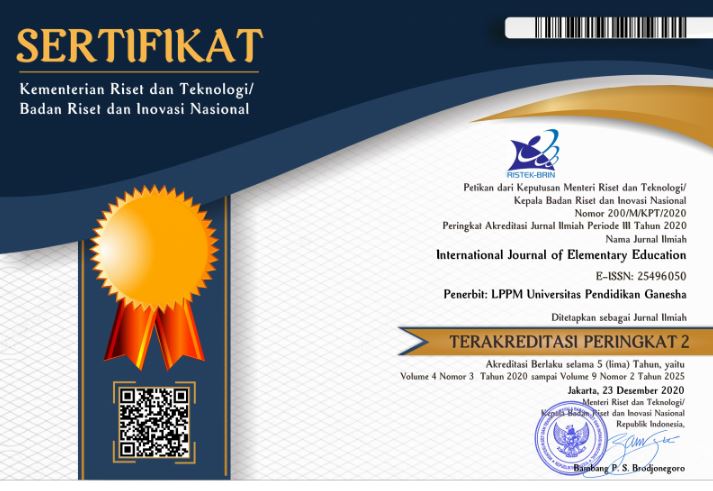Interactions and Acts of Teachers in the Classroom Primary School: Indication Bias
DOI:
https://doi.org/10.23887/ijee.v6i4.53955Keywords:
Primary School Teachers, Primary School Students, Indication Bias, ClassroomAbstract
Recent studies have incorporated teacher implicit assessment bias, with some suggesting that such bias could be used to predict student performance in class. The aim of this study was to analyze teachers' daily interactions with their students to identify potential biases in their practice. This study uses a qualitative exploratory field research format. This study involved twenty elementary school teachers as subjects. The data collection method in this study is observation. Each teacher was observed for 4 hours in an exploratory qualitative study. This study applies thematic analysis techniques to find patterns across the data. The validity and reliability of the research includes external validity, internal validity, and reliability. The results of this research suggest that one possible explanation for the prejudice we see is that it is mediated by the different ways in which teachers behave. However, some educators show bias. Bias can be shown in a variety of nonverbal and academic exchanges. Student achievement within the school system can be affected by teachers treating students differently.
References
Recent studies have incorporated teacher implicit assessment bias, with some suggesting that such bias could be used to predict student performance in class. The aim of this study was to analyze teachers' daily interactions with their students to identify potential biases in their practice. This study uses a qualitative exploratory field research format. This study involved twenty elementary school teachers as subjects. The data collection method in this study is observation. Each teacher was observed for 4 hours in an exploratory qualitative study. This study applies thematic analysis techniques to find patterns across the data. The validity and reliability of the research includes external validity, internal validity, and reliability. The results of this research suggest that one possible explanation for the prejudice we see is that it is mediated by the different ways in which teachers behave. However, some educators show bias. Bias can be shown in a variety of nonverbal and academic exchanges. Student achievement within the school system can be affected by teachers treating students differently.
Downloads
Published
How to Cite
Issue
Section
License
Copyright (c) 2022 Afib Rulyansah

This work is licensed under a Creative Commons Attribution-ShareAlike 4.0 International License.
Authors who publish with the International Journal of Elementary Education agree to the following terms:
- Authors retain copyright and grant the journal the right of first publication with the work simultaneously licensed under a Creative Commons Attribution License (CC BY-SA 4.0) that allows others to share the work with an acknowledgment of the work's authorship and initial publication in this journal.
- Authors are able to enter into separate, additional contractual arrangements for the non-exclusive distribution of the journal's published version of the work (e.g., post it to an institutional repository or publish it in a book), with an acknowledgment of its initial publication in this journal.
- Authors are permitted and encouraged to post their work online (e.g., in institutional repositories or on their website) prior to and during the submission process, as it can lead to productive exchanges, as well as earlier and greater citation of published work. (See The Effect of Open Access)









